Are you ready to take our partnership to the next level? Collaborating on market research can unlock new insights and opportunities that benefit both our businesses. By pooling our resources and expertise, we can better understand customer needs and trends in our industry. Join us as we explore the potential of this exciting collaboration, and read on to discover how we can work together for mutual success!

Purpose and Objectives
The purpose of the market research collaboration is to leverage synergies between Company A and Company B in order to gain comprehensive insights into the current market trends within the technology sector, particularly focusing on consumer electronics. Key objectives include identifying potential growth opportunities, analyzing consumer preferences through quantitative surveys and qualitative focus groups, and assessing competitor strategies to refine positioning. Data collection aims to encompass diverse demographics, especially targeting millennials and Gen Z consumers, who represent significant purchasing power in this segment. This collaboration will facilitate the development of strategic recommendations to enhance product offerings and optimize marketing efforts for both companies.
Market Research Scope
Market research scope outlines the specific areas of investigation and analysis within the collaborative partnership. Key components include target demographics, such as age ranges (18-65 years), geographic regions (North America, Europe, Asia), and purchasing behaviors (online vs. in-store). Research methodologies may involve qualitative studies, such as focus groups or in-depth interviews, alongside quantitative approaches like surveys distributed to a sample size of at least 1,000 respondents. Market trends, competitive landscape, and consumer preferences will be analyzed to provide actionable insights. Deliverables include comprehensive reports, presentations, and strategic recommendations, ensuring alignment with business objectives and enhancing data-driven decision-making for both partners. Execution timeline spans three months, with regular checkpoints to assess progress and adapt strategies.
Key Deliverables and Timeline
Market research collaboration between businesses requires clear identification of key deliverables and an established timeline. Specific deliverables include comprehensive reports on consumer behavior analysis, identification of market trends, and competitor assessments across designated regions or demographics. Timelines should detail phases such as initial research design completion (typically one month), data collection period (two months), analysis and report drafting (one month), and final presentation of findings (two weeks). By adhering to this structured format, both partners ensure alignment, accountability, and effective communication throughout the research process.
Confidentiality and Data Sharing
Confidentiality in business partnerships is crucial, especially during market research collaborations, such as those involving sensitive financial data or proprietary technologies. Companies often sign Non-Disclosure Agreements (NDAs), which outline the scope of shared information, typically including product designs, customer demographics, or strategic plans. Data sharing practices adhere to guidelines established by regulatory bodies like the General Data Protection Regulation (GDPR) in Europe, ensuring personal data protection and ethical handling of market insights. With the rise of data analytics tools, businesses leverage platforms like Tableau or Microsoft Power BI to visualize shared data, enabling informed decision-making while maintaining confidentiality protocols. Effective communication channels should be established, ensuring that both partners understand their obligations regarding information security and compliance.
Contact Information and Next Steps
In the dynamic realm of business partnerships, thorough market research holds the key to informed decision-making and strategic growth. Essential contact information encapsulates names, emails, and phone numbers of involved stakeholders, facilitating seamless communication. Additionally, outlining next steps ensures clarity in project progression, with proposed timelines for data collection, analysis, and review meetings. This structured approach not only fosters collaboration but also aligns objectives, leading to actionable insights that drive competitive advantage in targeted markets. Prioritizing these elements enhances the partnership's potential for success.
Letter Template For Business Partner Market Research Collaboration Samples
Letter template of partnership invitation for joint market research efforts.
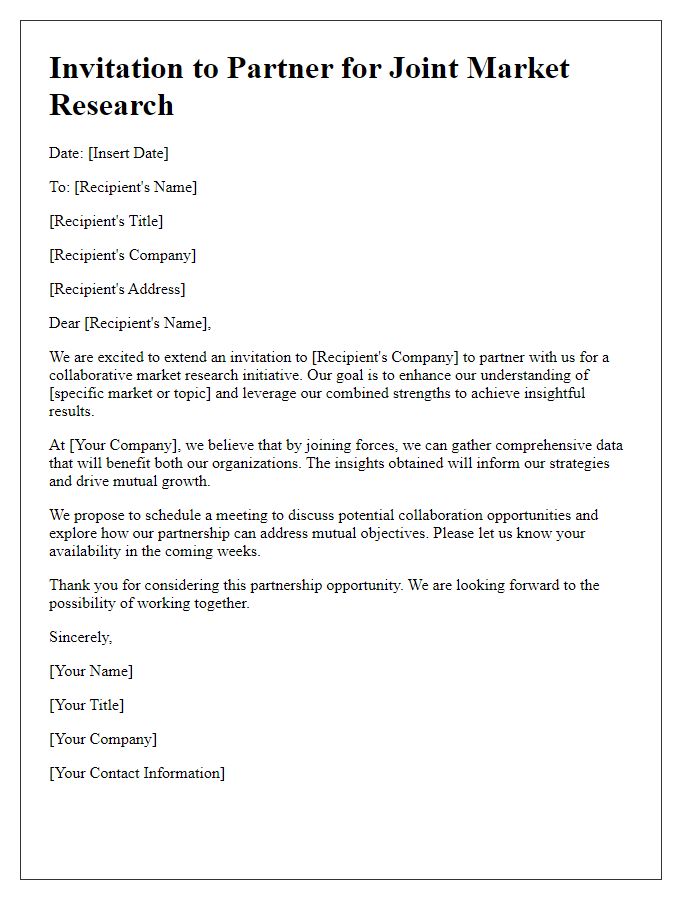
Letter template of engagement invitation for collaborative market exploration.
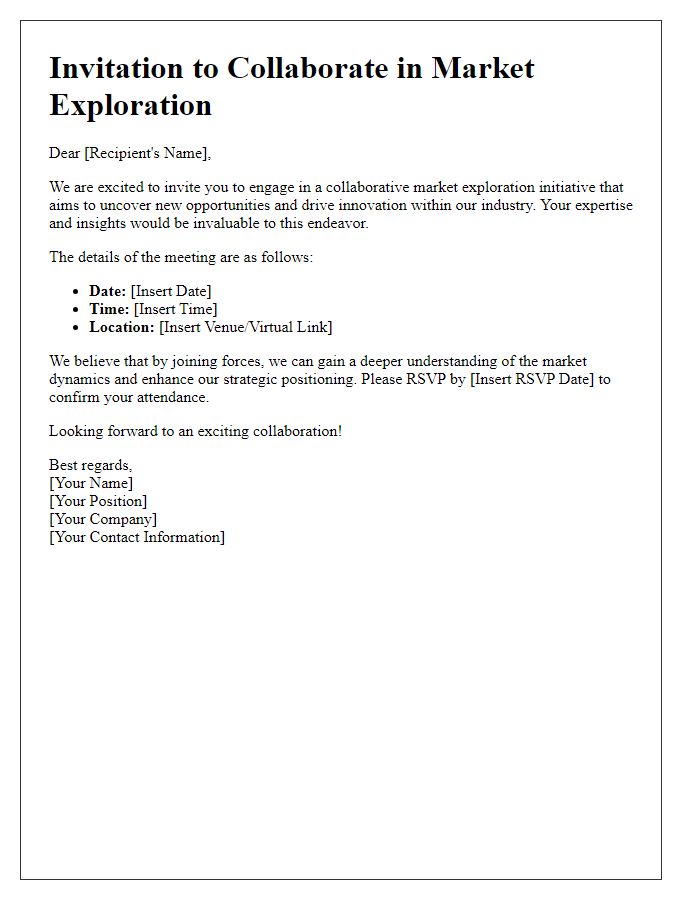
Letter template of partnership inquiry for comprehensive market research.
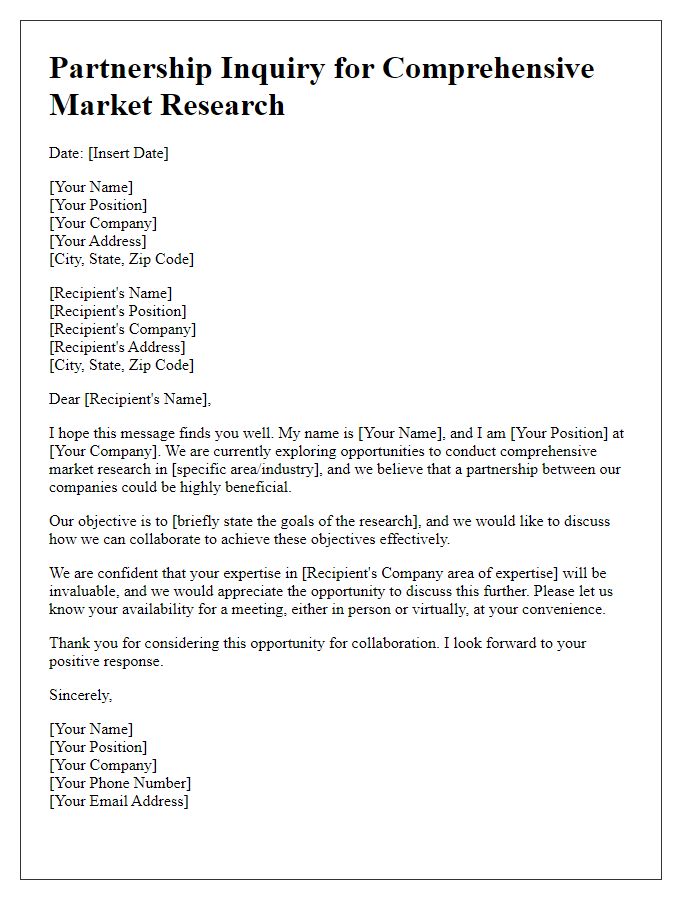
Letter template of alliance suggestion for market analysis collaboration.
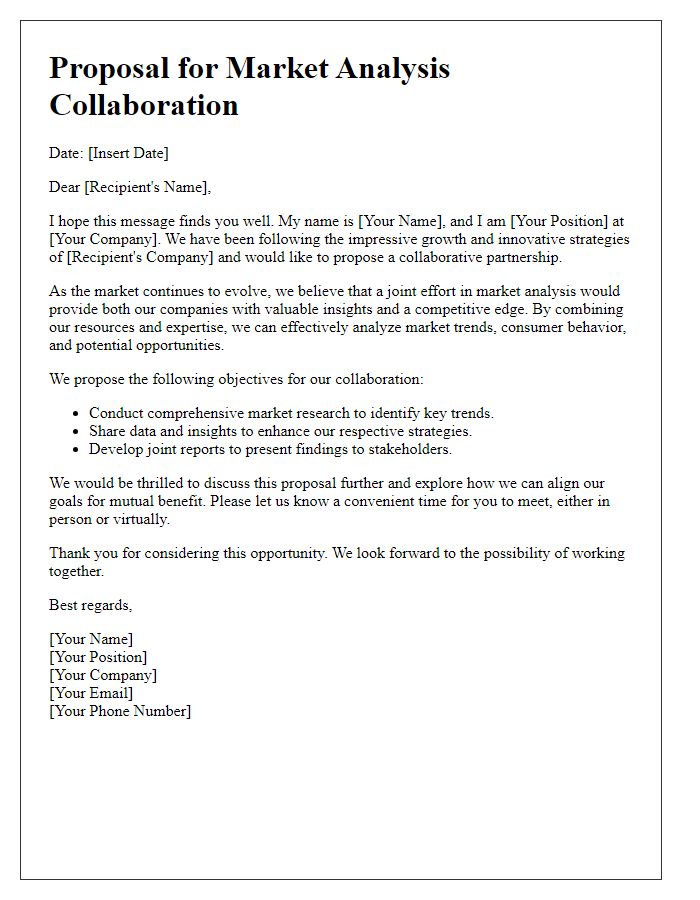

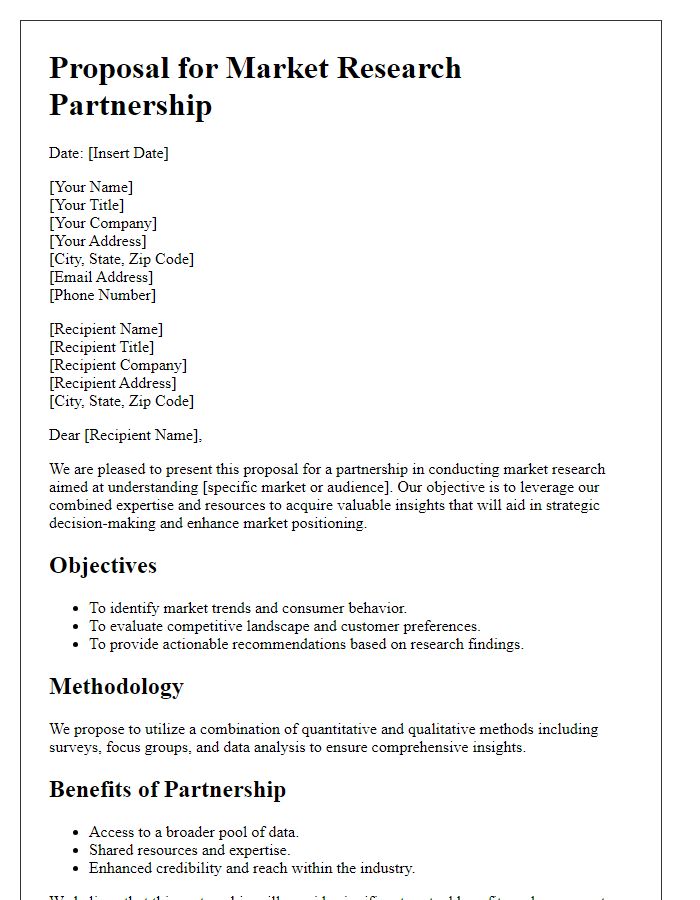
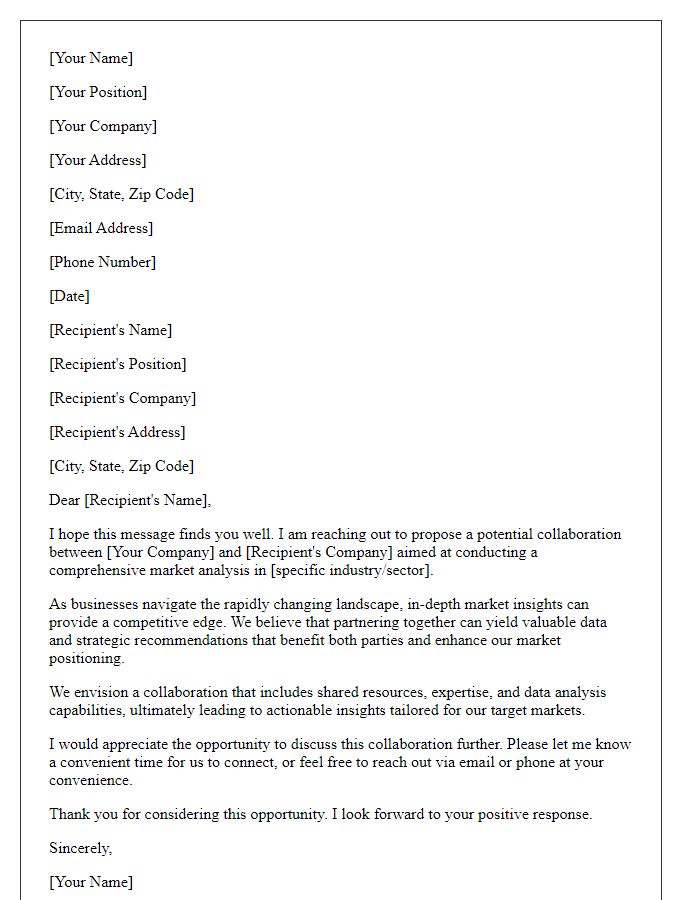
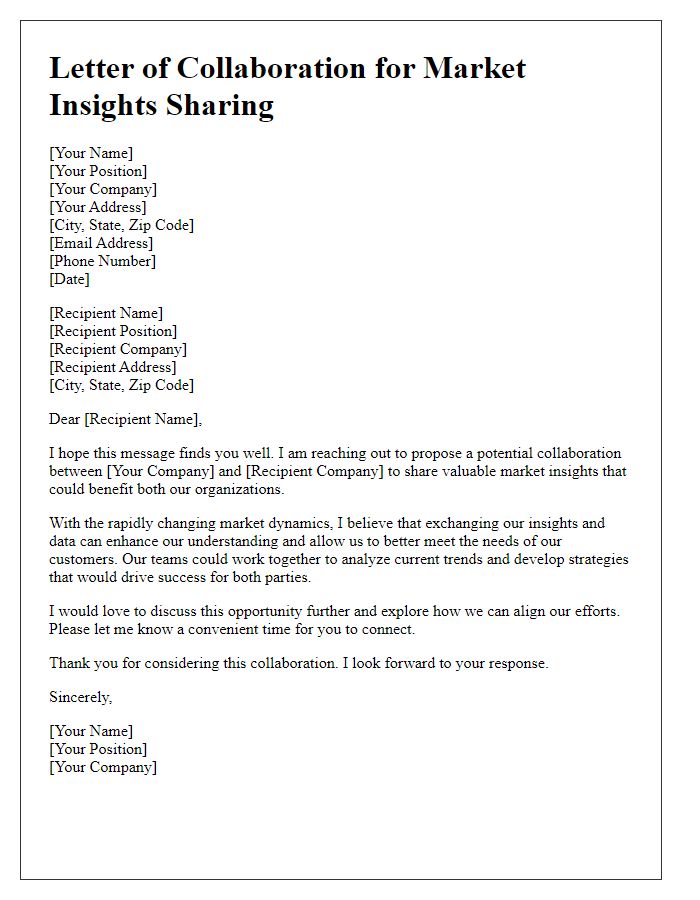
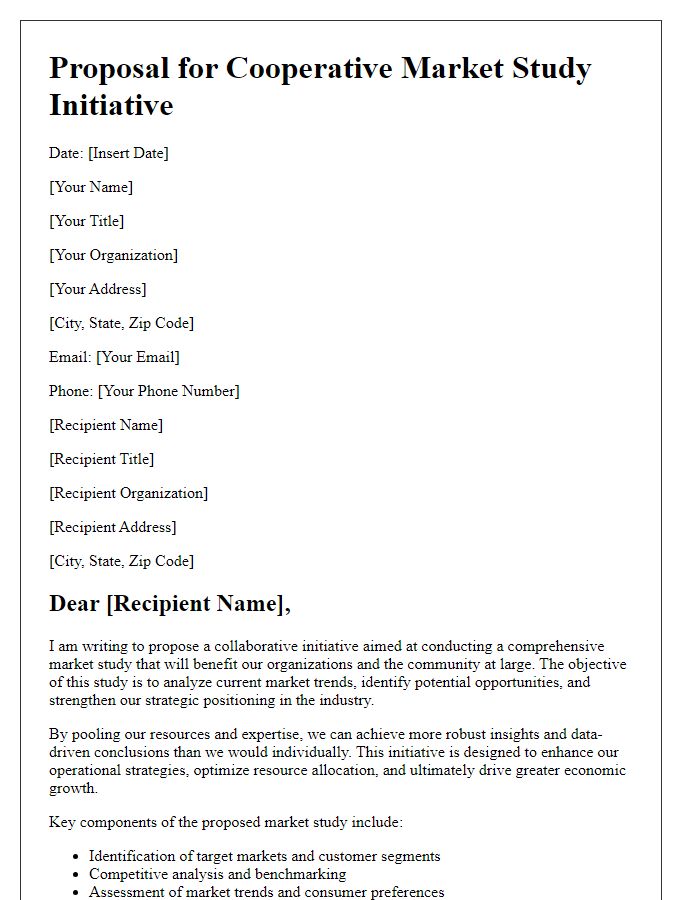
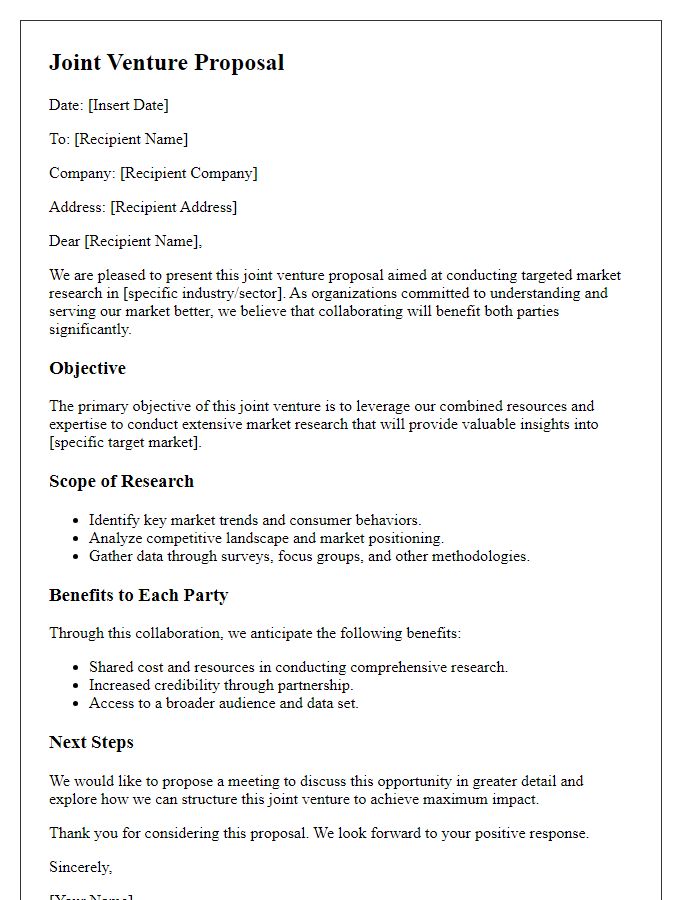
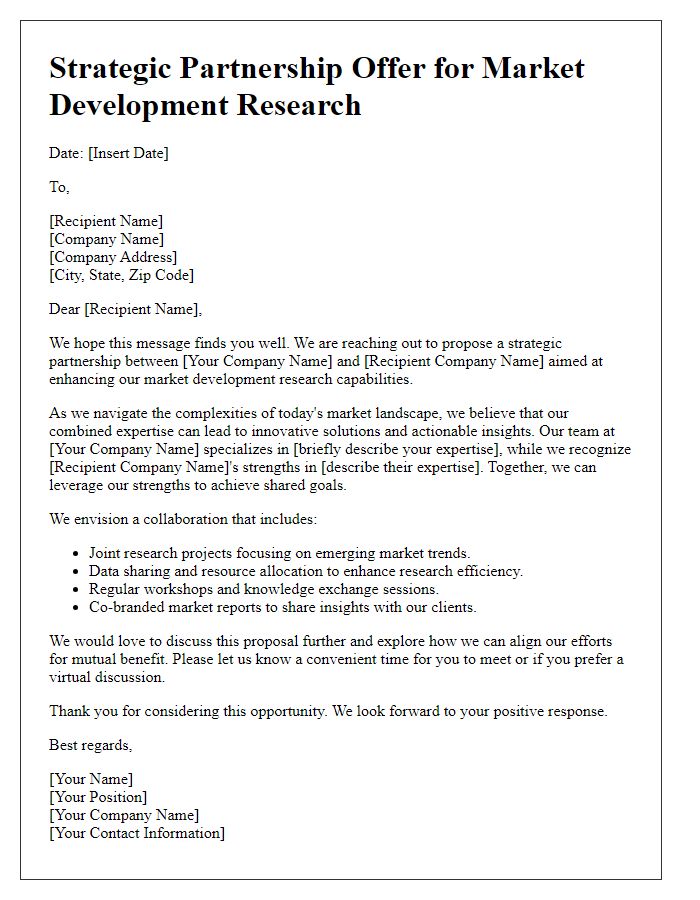


Comments